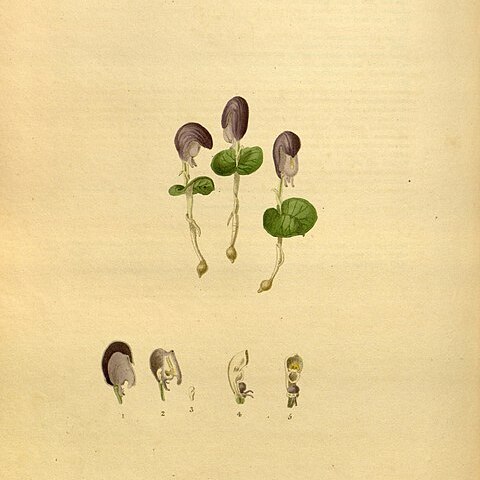Leaf round to cordate, 15–35 × 10–25 mm, dark green above, purplish beneath. Flower semi-nodding on a thick stalk c. 1 mm long, 12–20 × 5–7 mm, greyish pink to reddish purple. Dorsal sepal narrowly elliptical when flattened, 20–25 × 7–10 mm, strongly curved like a scimitar in side view, much longer than labellum. Lateral sepals c. 2 mm long. Petals c. 1 mm long. Labellum whitish, mostly hidden by dorsal sepal; labellum tube c. 3 mm long; margins sharply recurved, with sparse tiny bristly hairs c. 0.1 mm long; labellum lamina narrowly elliptic in front view, 7–9 × 4–5 mm. Spurs 2–3 mm long. Column c. 3 mm long.
An orchid. It grows 50 cm tall. The leaf is heart shaped and 2 cm long. This is purple underneath. There is a single white-red flower that is hooked.

